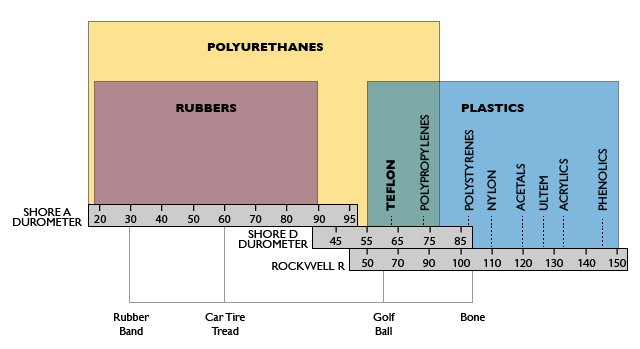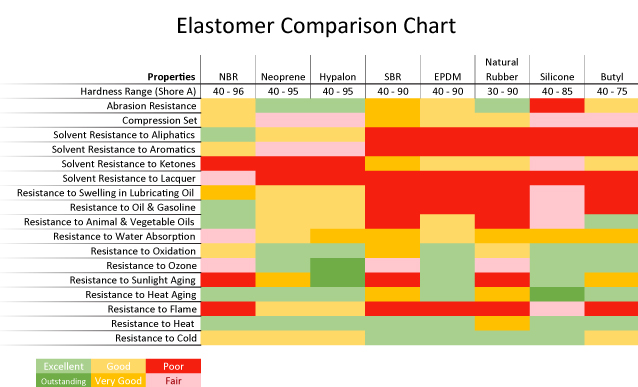



Durometer And Material Selection Explained
What is Durometer and How Does it Affect What Type of Material You Use for Your Application?
Durometer is a gauge that can be used to check the hardness of given materials. Hardness is the resistance to surface penetration. Lower numbers indicate softer, more flexible materials, while higher numbers indicate harder and typically more durable materials. Along with the number there is usually an alpha scale rating with “A” being softer materials and “D” for harder materials.
While durometer can technically be used to test the hardness of just about any substance, the main uses of the gauge are associated with measuring the hardness of rubber or plastic products. See the graphical illustration of Durometer below.

Foam materials are typically expressed by their density. Density is the measurement of the amount of mass per volume and is usually given in pounds per cubic foot. Typically, the higher the density, the more supportive and durable the foam is. However, it should be noted that higher density foams can be produced to be softer and lower density foams can be made to be firmer.
So Which Material Should I Select?
When selecting materials for your application, remember that a material’s thickness and weight being supported have a correlation to its pressure resistance. Beyond just durometer or density, you should also consider:
- Thickness and die cut parts that match your application.
- Water and air permeability - Open cell structures like polyester and polyether urethanes will allow air and moisture to pass through, while closed cells like polyvinyl chlorides create a permeability barrier.
- Application force- “Force to Compress” is the pounds per square inch of force needed to compress the material. Particularly in critical foam gasketing applications, it is important to apply enough consistent force to compress the thickness of the gasket approximately 30% to ensure a proper moisture seal.
- Firmness or stiffness- The load bearing capacity of a foam is determined by compressing the foam by typically 25% and measuring the “Compression Deflection” in pounds per square inch. A higher value shows that a foam will support a load or deflect back to the load source to create a good seal.
- Seal integrity- Compression set % is a measure of the permanent deformation of a foam after it has been compressed between two metal plates for a controlled time period and temperature condition. High compression set means the material is susceptible to deformation that may produce gaps or application failures.
- Environmental conditions- Also consider the solvent and chemical resistance needs in your application. See the chart below for more detailed material characteristics.
